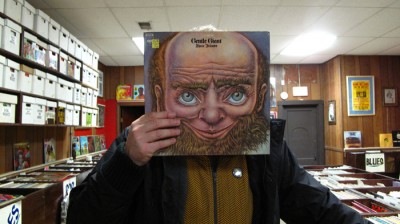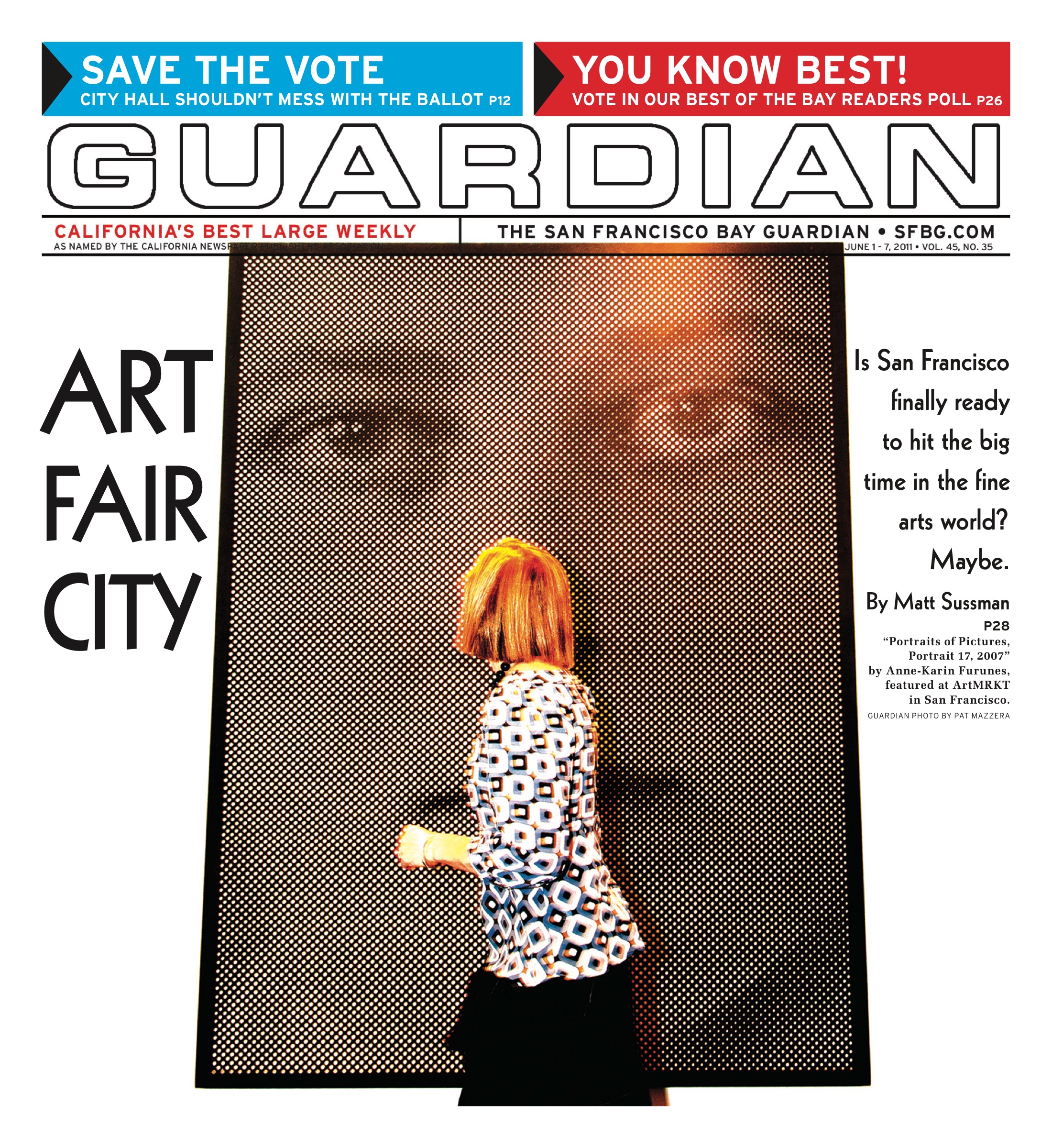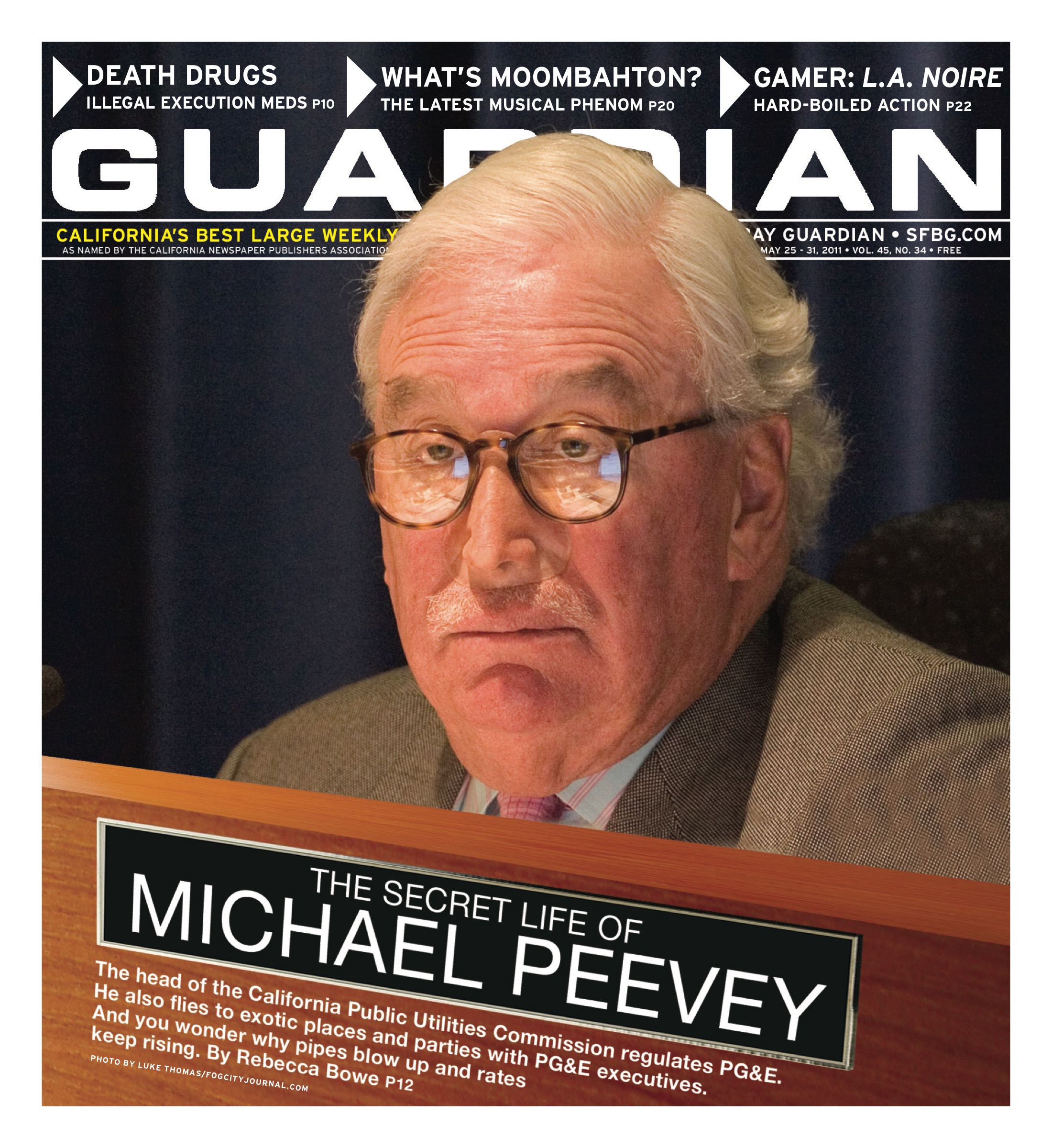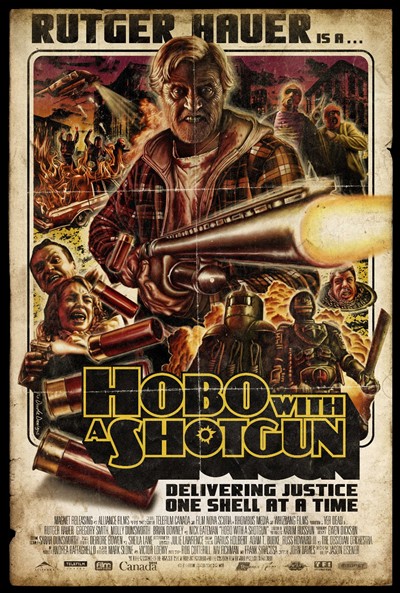Music listings are compiled by Cheryl Eddy. Since club life is unpredictable, it’s a good idea to call ahead to confirm bookings and hours. Prices are listed when provided to us. Submit items for the listings at listings@sfbg.com. For further information on how to submit items for the listings, see Picks.
WEDNESDAY 1
ROCK/BLUES/HIP-HOP
Calms, One Percent, Punk Group El Rio. 9pm, $5.
Flogging Molly Amoeba, 1865 Haight, SF; www.amoeba.com. 6pm, free.
Forever the Sickest Kids, Anarbor, I the Mighty Slim’s. 7:30pm, $16.
Gayngs, White Hinterland Independent. 8pm, $17.
Givers, Family of the Year, Caddywhompus Rickshaw Stop. 7:30pm, $12.
Jason King Band Biscuits and Blues. 8 and 10pm, $15.
Moonbell, Down Dirty Shake Hemlock Tavern. 9pm, $6.
Os Beaches, Grand Lodge, Festizio, Beehavers Café Du Nord. 9:30pm, $10.
Parlotones, Daylights, Farewell Typewriter Bottom of the Hill. 9pm, $12.
“Penny Arcade: A Live Music Showcase Six-Year Anniversary Party” Make-Out Room. 8pm, $8. With Skystone, Forever Goldrush, Pat Parra, Will Sprott, and host Raul Sanchez.
JAZZ/NEW MUSIC
Cosmo Alleycats Le Colonial, 20 Cosmo, SF; www.lecolonialsf.com. 7pm.
Dink Dink Dink, Gaucho, Michael Abraham Amnesia. 7pm, free.
Jazz organ party with Graham Connah Royal Cuckoo, 3202 Mission, SF; www.royalcuckoo.com. 7:30pm, free.
Ben Marcato and the Mondo Combo Top of the Mark. 7:30pm, $10.
DANCE CLUBS
Booty Call Q-Bar, 456 Castro, SF; www.bootycallwednesdays.com. 9pm. Juanita Moore hosts this dance party, featuring DJ Robot Hustle.
Buena Onda Little Baobab, 3388 19th St, SF; (415) 643-3558. 10pm, free. Funk, swing, rare grooves, and more with Dr. Musco and guests.
Footwerks Elbo Room. 9pm, $12. Hip-hop and electro with DJ Assault, Ripley, Dials, Sharon Needles, Ryury, and Electroass.
No Room For Squares Som., 2925 16th St, SF; (415) 558-8521. 6-10pm, free. DJ Afrodite Shake spins jazz for happy hour.
THURSDAY 2
ROCK/BLUES/HIP-HOP
Architecture in Helsinki, Hooray for Earth Great American Music Hall. 9pm, $21.
Barcelona, Holcombe Waller, Jenny O Swedish American Hall (upstairs from Café Du Nord). 7:30pm, $16.
Botticellis, Breathe Owl Breathe, Yesway, Hold Outs Bottom of the Hill. 8:30pm, $10.
Dirty Ghosts, Swiftumz, Golden Void Hemlock Tavern. 9pm, $7.
John Grant, Heidi Independent. 8pm, $20.
Gruff Rhys, Y Niwl, DJ Aaron Axelsen, DJ Omar Rickshaw Stop. 9pm, $13.
Hypnotist Collectors, Love Dimension, Blank Tapes, These Hills of Gold Café Du Nord. 8:30pm, $10.
Michael Landau Group Biscuits and Blues. 8 and 10pm, $18.
Pharoahe Monch 330 Ritch. 9pm, $15.
JAZZ/NEW MUSIC
Larry Carlton Rrazz Room. 8pm, $47.50.
Dave Parker Quartet Purple Onion, 140 Columbus, SF; (415) 956-1653. 8:30-11pm, free.
Organsm featuring Jim Gunderson and “Tender” Tim Shea Bollyhood Café. 6:30-9pm, free.
Soul jazz party with Chris Siebert Royal Cuckoo, 3202 Mission, SF; www.royalcuckoo.com. 7:30pm, free.
Stompy Jones Top of the Mark. 7:30pm, $10.
FOLK/WORLD/COUNTRY
Heather Combs, Steward Lewis, Pi Jacobs Hotel Utah. 8pm, $8.
Jesse Kotansky and friends Amnesia. 9pm.
“Twang! Honky Tonk” Fiddler’s Green, 1330 Columbus, SF; www.twanghonkytonk.com. 5pm.
DANCE CLUBS
Afrolicious Elbo Room. 9:30pm, $5. DJs Pleasuremaker and Señor Oz spin Afrobeat, Tropicália, electro, samba, and funk, with guests Dasu Mali Band playing live music.
Culture Corner Koko Cocktails, 1060 Geary, SF; www.kokococktails.com. 10pm, free. Roots reggae, dub, rocksteady, and classic dancehall with DJ Tomas, Yusuke, Vinnie Esparza, and Basshaka and ILWF.
80s Night Cat Club. 9pm, $6 (free before 9:30pm). Two dance floors bumpin’ with the best of 80s mainstream and underground with Dangerous Dan, Skip, Low Life, and guests.
Electric Feel Lookout, 2600 16th St, SF; www.fringesf.com. 9pm, $2. Indie music video dance party with DJ Mario Muse.
Guilty Pleasures Gestalt, 3159 16th St, SF; (415) 560-0137. 9:30pm, free. DJ TophZilla, Rob Metal, DJ Stef, and Disco-D spin punk, metal, electro-funk, and 80s.
1984 Mighty. 9pm, $2. The long-running New Wave and 80s party features video DJs Mark Andrus, Don Lynch, and celebrity guests.
Thursday Special Tralala Revolution Café, 3248 22nd St, SF; (415) 642-0474. 5pm, free. Downtempo, hip-hop, and freestyle beats by Dr. Musco and Unbroken Circle MCs.
Tropicana Madrone Art Bar. 9pm, free. Salsa, cumbia, reggaeton, and more with DJs Don Bustamante, Apocolypto, Sr. Saen, Santero, and Mr. E.
FRIDAY 3
ROCK/BLUES/HIP-HOP
Album Leaf, Sister Crayon, Casino Independent. 9pm, $15.
Architecture in Helsinki, Hooray for Earth Great American Music Hall. 9pm, $21.
Blackfield Great American Music Hall. 9pm, $26.
Damon and Naomi, Amor De Días, Colossal Yes Bottom of the Hill. 9:30pm, $14.
Dead Westerns, Slow Trucks, Pony Village Hemlock Tavern. 9:30pm, $7.
Petty Theft, Heather Combs Band Red Devil Lounge. 9pm, $12.
Sonny Rhodes Biscuits and Blues. 8 and 10pm, $20.
White Buffalo, Sonny Pete, Foolproof Four Café Du Nord. 9:30pm, $12.
Wombats, Wild Party, Tender Box, DJ Aaron Axelsen Rickshaw Stop. 9pm, $15.
JAZZ/NEW MUSIC
Black Market Jazz Orchestra Top of the Mark. 9pm, $10.
Larry Carlton Rrazz Room. 8pm, $47.50.
Jazz organ party with Graham Connah Royal Cuckoo, 3202 Mission, SF; www.royalcuckoo.com. 7:30pm, free.
Vaughn Johnson Jack’s Club, 2545 24th St, SF; (415) 641-5371. 7-9pm.
Kronos Quartet and Wu Man Yerba Buena Center for the Arts Theater, 700 Howard, SF; www.ybca.org. 8pm, $25.
Steve Tyrell Herbst Theatre, 401 Van Ness, SF; www.sfjazz.org. 8pm, $25-60.
DANCE CLUBS
Afro Bao Little Baobab, 3388 19th St, SF; (415) 643-3558. 10pm, $5. Afro and world music with rotating DJs including Stepwise, Steve, Claude, Santero, and Elembe.
Borgore, Roomate, Ritual Dubstep Crew DNA Lounge. 9pm, $20. Israeli dubstep and house.
120 Minutes Elbo Room. 10pm. Witch house with DHs Whitch, oOoOO, and Nako.
Strangelove Cat Club. 9:30pm, $3-7. Goth and industrial with DJ Tomas Diablo, Joe Radio, Daniel Skellington, and Starr.
Vintage Orson, 508 Fourth St, SF; (415) 777-1508. 5:30-11pm, free. DJ TophOne and guest spin jazzy beats for cocktalians.
SATURDAY 4
ROCK/BLUES/HIP-HOP
Bootsy Collins Fillmore. 9pm, $46.
Buds Riptide Tavern. 9:45pm, free.
Dale Earnhardt Jr. Jr., EMA, Burnt Ones Rickshaw Stop. 8:30pm, $12.
Delta Wires Biscuits and Blues. 8 and 10pm, $20.
Earth, Wind, and Fire Bill Graham Civic Auditorium, 99 Grove, SF; www.ticketmaster.com. 8pm, $49.50-99.50.
Illness, Disasteroid, Outshined El Rio. 9pm, $8.
Little Wings, Rad Cloud, Seth Petterson, Owens Valley, Dynamite Amnesia. 9pm, $10.
Mission Players, Crackerjack Highway, Bulk Red Devil Lounge. 9:30pm, $10.
Ken Mode, Deaf Heaven Elbo Room. 6-9pm, $8.
My Parade, Rinds Thee Parkside. 3pm, free.
Picture Atlantic, Rin Tin Tiger, Handshake, Lakes Bottom of the Hill. 9pm, $10.
Planet Booty, Tigercat, Tres Lingerie Café Du Nord. 9:30pm, $12.
Quick and Easy Boys Grant and Green. 9pm.
Stornoway, Sea of Bees Independent. 9pm, $15.
VYGR, At Our Heels, Funeral Pyre, Viral Hemlock Tavern. 9:30pm, $8.
Walken, Aerial Ruin, Saturn Returns Thee Parkside. 10pm, $7.
JAZZ/NEW MUSIC
“Blue Note Rendezvous” 50 Mason Social House, 50 Mason, SF; www.50masonsocialhouse.com. 9pm, $5-10. With Damfino Players, Emperor Norton’s Jazz Band, and belly dancing.
Larry Carlton Rrazz Room. 7 and 9:30pm, $47.50.
Jazz organ party with Graham Connah Royal Cuckoo, 3202 Mission, SF; www.royalcuckoo.com. 7:30pm, free.
Kronos Quartet and Wu Man Yerba Buena Center for the Arts Theater, 700 Howard, SF; www.ybca.org. 8pm, $25.
ROVA Saxophone Quartet with DJ Olive and DJ P-Love Swedish American Hall (upstairs from Café Du Nord). 8pm, $25.
Stompy Jones, Carl Sonny Leyland Verdi Club, 2424 Mariposa, SF; www.oldtimey.net. 9:30pm, $15.
FOLK/WORLD/COUNTRY
“Cowpokes, Gunslingers, and Outlaw Country” Slim’s. 8:30pm, $13. With Earl Brothers, Hang Jones, Tiny Television, and Pops.
Misner and Smith, Gwyneth and Monko Plough and Stars. 9:30pm, $6-10.
“Saturday Night Salsa” Ramp, 855 Terry Francois, SF; www.facebook.com/TheRampSF. 5:30-8:30pm, $10.
DANCE CLUBS
Afro Bao Little Baobab, 3388 19th St, SF; (415) 643-3558. 10pm, $5. Afro and world music with rotating DJs including Stepwise, Steve, Claude, Santero, and Elembe.
Bootie SF DNA Lounge. 9pm, $6-12. Mash-ups.
Saturday Night Soul Party Elbo Room. 10pm, $5-10. Sixties soul with DJs Lucky, Phengren Oswald, and Paul Paul.
SUNDAY 5
ROCK/BLUES/HIP-HOP
Anna Calvi, Cuckoo Chaos Café Du Nord. 9pm, $15.
Coffin Hunter Thee Parkside. 4pm, free.
“JAMband Family Festival” Park Chalet, 1000 Great Hwy, SF; www.jamjamjam.com. 11am, free. With Charity Kahn and the JAMband.
Harvey Mandel Biscuits and Blues. 8 and 10pm, $20. With Barry Goldberg and Nick Gravenites.
Winter’s Fall, Mike Sempert, Kissing Cousins, Mist Giants Rickshaw Stop. 8pm, $10.
Woodsman, Tapedeck Mountain, Fatality Reality Hemlock Tavern. 9pm, $7.
JAZZ/NEW MUSIC
Jazz organ party with Lavay Smith and Chris Siebert Royal Cuckoo, 3202 Mission, SF; www.royalcuckoo.com. 7:30pm, free.
Kally Price Old Blues and Jazz Band, Emperor Norton’s Jazz Band Amnesia. 9pm, $5
Noertker’s Moxie Musicians’ Union Hall, 116 Ninth St, SF; www.noertker.com. 7:30pm, $10.
Lee Ritenour Herbst Theatre, 401 Van Ness, SF; www.sfjazz.org. 7pm, $25-60.
Tom Lander Duo Medjool, 2522 Mission, SF; www.medjoolsf.com. 6-9pm, free.
FOLK/WORLD/COUNTRY
Miguel Govea y Los Compas Erl Rio. 4pm, $8-10.
“Soultraditionlove” Palace of Fine Arts, 3301 Lyon, SF; www.zawaya.org. 3pm. Folkloric and classical Arab music from Palestine and beyond.
“Sunday Night Latin Sounds” Ramp, 855 Terry Francois, SF; www.facebook.com/TheRampSF. 5:30-8:30pm, $7.
A.J. Swearingen and Jonathan Beedle Slim’s. 7:30pm, $25. Performing Simon and Garfunkel songs.
DANCE CLUBS
Batcave Cat Club. 10pm, $5. Death rock, goth, and post-punk with Steeplerot Necromos and c_death.
Dub Mission Elbo Room. 9pm, $6. Dub, roots, and classic dancehall with DJ Sep, Ludachris, and guest DJ Wisdom.
La Pachanga Blue Macaw, 2565 Mission, SF; www.thebluemacawsf.com. 6pm, $10. Salsa dance party with live Afro-Cuban salsa bands.
MONDAY 6
ROCK/BLUES/HIP-HOP
Father President, Bleached Palms, Symbolick Jews Elbo Room. 9pm, $6.
David Lowery Café Du Nord. 8pm, $24.
“Winter’s Bone: The Complete Musical Score of the Motion Picture Performed by the Original Composers” Great American Music Hall. 8pm, $20.
DANCE CLUBS
Death Guild DNA Lounge. 9:30pm, $3-5. Gothic, industrial, and synthpop with Joe Radio, Decay, and Melting Girl.
M.O.M. Madrone Art Bar. 6pm, free. DJs Timoteo Gigante, Gordo Cabeza, and Chris Phlek playing all Motown every Monday.
Sausage Party Rosamunde Sausage Grill, 2832 Mission, SF; (415) 970-9015. 6:30-9:30pm, free. DJ Dandy Dixon spins vintage rock, R&B, global beats, funk, and disco at this happy hour sausage-shack gig.
TUESDAY 7
ROCK/BLUES/HIP-HOP
Corpus Callosum, Eleanor Murray, Ben Henderson Hemlock Tavern. 9pm, $6.
Devil Whale, David Williams Amnesia. 9:30pm, $5.
Glasvegas, Gliss Great American Music Hall. 9pm, $20.
Sarah Jarosz, Crooked Jades, Megan Keely Slim’s. 8pm, $14.
Agnes Obel, Jhameel, Bird By Snow Rickshaw Stop. 8pm, $12.
Orange Goblin, Gates of Slumber, Naam, DJ Rob Metal Bottom of the Hill. 9pm, $14.
Sloan, Dearly Beloved Café Du Nord. 9:30pm, $15.
DANCE CLUBS
DJs Dion and Kwala Elbo Room. 9pm, $5. Capoeira Brasil fundraiser with Brazilian dance hits, samba, bossa nova, and more.
Eclectic Company Skylark, 9pm, free. DJs Tones and Jaybee spin old school hip hop, bass, dub, glitch, and electro.










